Nationwide Cellular Network Connects Election Equipment Giving Federal Government Access to Precinct Election Systems
Guest post by David and Erin Clements via Joe Hoft
A growing majority of Americans know the 2020 election was fraudulent. Many analysts who have been studying election integrity have concluded that there had to be a two-way connection between local election electronics (electronic poll pads, tabulators, election management systems, voter databases, etc.) and a centralized data collection system responsible for monitoring and manipulating the election. Fingers have rightly been pointed at all-inclusive election management software, the Albert Sensor system, Scytl and Edison, and the Election Infrastructure Information Sharing and Analysis Center (EI-ISAC).
[…]
While experts could understand the functional capabilities of how these programs manipulate elections at the county and state levels, one area of mystery remained. Experts could not fully explain how systems within individual precincts which are supposedly “air-gapped” were adding votes in real-time – such as KnowInk poll pads in Texas that added hundreds of votes to the 2022 midterm election after the polls had closed. To accomplish election fraud at individual polling places, it is necessary to have an air-interface with the supposedly “air-gapped” equipment networked at the polling place.
A year-long research project led by an election integrity investigator from Utah, Sophie Anderson, and communications engineer, Dr. Charles Bernardin, has uncovered the mechanism that is being used to connect our election equipment at polling places across the nation.
[…]
WHAT IS FIRSTNET?
The idea of a national cellular network dedicated to public safety was hatched in the wake of 9/11 when congested cell networks proved to be a bottleneck for first responders. In 2012, Congress created the First Responder Network Authority under the Department of Commerce to oversee the build-out of “FirstNet.” The original intent provided by its sponsors was that FirstNet would serve police, fire, and EMT services. However, the scope was soon expanded to include all “critical infrastructure” – which included water, energy, and transportation infrastructure. (https://www.digi.com/solutions/by-technology/firstnet ).
Curiously, just days before Barack Obama left office, his administration’s Department of Homeland Security used the specter of “Russian interference” in the 2016 election as an excuse to declare election systems to be a part of that critical infrastructure. As a result, the stage was set to roll election systems into FirstNet.
The original plan to build FirstNet was to create a separate network with nationwide coverage that used a dedicated cellular band portion known as Band 14. Years and billions of dollars later, AT&T had built out the FirstNet Band 14 network with the coverage shown in the map below.
AT&T’s FirstNet Band 14 Coverage
[…]
Almost instantly, FirstNet’s coverage increased from pockets of the country to cover most of the population and its voting locations as shown in the map below. This coverage assures electronic poll pads, election management systems, and tabulators with internet connection capabilities could be connected as “critical infrastructure” to the FirstNet network and given priority service, regardless of the presence or quality of local wired internet service.
Areas where FirstNet has ability to preempt existing cellular networks (source (https://www.nperf.com/en/map/5g))
THE PUSH TO CONNECT ELECTION SYSTEMS TO FIRSTNET
Just because the FirstNet cellular network was now available to be used for election systems, didn’t mean all local jurisdictions would connect. Some of them would need to be pushed. Coincidentally, public discussion of using the Election Assistance Commission’s (EAC) influence to push election jurisdictions nationwide to connect to FirstNet took place at a two-day Election Assistance Commission (EAC) Board of Advisers meeting in April 2019. The full transcript of the meeting is here.
[…]
The Board’s expectation of the need to deal with unprecedented national shelter in place orders during a presidential election amounts to an unbelievable prophetic foresight of what would occur leading up to, and during the 2020 election. A similarly dark prophetic exercise called Event 201 was held by the Johns Hopkins Center for Health and Security in partnership with the World Economic Forum and the Gates Foundation where bureaucrats practiced controlling narratives during a “hypothetical” worldwide pandemic that would soon take over the planet in reality.
[…]
Ivey-Soto wanted the electronic poll pads (which have full access to the voter registration database and voter turnout) and the systems that transmit the election results to be connected to the FirstNet network. Fellow board member, Gema Howell, immediately latched on to Ivey-Soto’s idea of using preemption privileges to connect election equipment to the internet. The board lamented their lack of authority to force jurisdictions to connect to FirstNet. But they decided to use their leverage and connections in the federal government to push the use of the FirstNet cellular network for election systems.
EVIDENCE LOCAL JURISDICTIONS ARE CONNECTED TO FIRSTNET
There is a lot of hard evidence that the EAC Board of Advisors successfully carried out Daniel Ivey-Soto’s vision to connect the nation’s polling places to the FirstNet cellular network.
DALLAS COUNTY
For example, there is the official network diagram for election sites in Dallas County, Texas (shown below). The diagram shows both the electronic pollbooks and the tabulators connected to a cellular network with a two-way connection between the router at the polling place and the cellular network itself, which is connected to a central county data center.
Network diagram from Dallas County public presentation showing tabulators and pollbooks connected to a cellular network
The priority cellular services provided by Verizon to the Dallas County elections office was the subject of a May 2020 discussion hosted by Hans Olsen, former Department of Homeland Security employee. The goal of the talk was to explain how they “securely” connected election equipment to the cellular network during the March 2020 Primary election. They also heavily advertised Cradlepoint modems which are used prolifically by public safety and critical infrastructure customers to connect to FirstNet.
Slide from Dallas County public presentation on using Cradlepoint modems to connect polling sites to cellular networks
[…]
The researchers believe the priority cellular network referenced in this talk is actually FirstNet. According to Dr. Bernardin, “The environment for the Government’s intrusion is partially determined by the IT people when they configure the router at the voter center… the IT manager sets up the private network with Wi-Fi protected access and a firewall. The router can be set to randomize the MAC address to keep the network from being identified, but the randomization can be shared with trusted people. The router provides a private, two-way connection between the election equipment and the FirstNet cellular network. Once this two-way connection is established, FirstNet can monitor real-time data that is passing through the election equipment – including who is turning out and how they are voting. This data can be remotely changed by a man-in-the-middle operating on the FirstNet network. In fact, the election results can be entirely fabricated with this clandestine configuration, and nobody would know.”
FLORIDA
Citizen researchers in St. Johns County, Florida coordinated with each other to document the Wi-Fi networks that were active at fifteen of the polling locations across their county. They discovered that a single cellular network that had been named “LetTheDogOut!” was serving all 15 voting locations in St. Johns County during the 2022 midterms.
Screenshot of Cellular Wi-Fi Network serving St. Johns County, Florida
This evidence indicates that St. Johns County was using a similar priority network setup as Dallas County, Texas, and that service was part of the nationwide “public safety” network.
[…]
SECRECY AND VULNERABILITY
[…]
Shockingly, according to Senator Ron Wyden, FirstNet is also exempt from congressional oversight. In a letter published in April 2023, Wyden stated concerns about the security of the FirstNet network and the likelihood that it could be hacked by bad actors:
[…]
INFRASTRUCTURE TO STEAL ELECTIONS
[…]
Revelations from the Snowden documents suggest that AT&T’s relationship with the federal government continues with the installing of surveillance equipment for the NSA in at least 59 domestic sites. Shortly after the corrupt election system failed to deliver the presidency to Hillary Clinton in 2016, even the Brennan Center for Justice expressed concern that the NSA was too cozy with our domestic communications infrastructure – a topic they are silent on now.
Does infrastructure exist that could change election results electronically in real-time without noticeable delay? Yes – such a thing could be facilitated at the national level by the FirstNet cellular network. All the players surrounding the deployment of FirstNet into elections are already on the suspect list of bad actors of every election integrity researcher as well being part of the group of people who were caught illegally censoring Americans who know 2020 was not a legitimate election.
[…]
Network diagram showing how FirstNet could be misused to interfere with election infrastructure
[…]



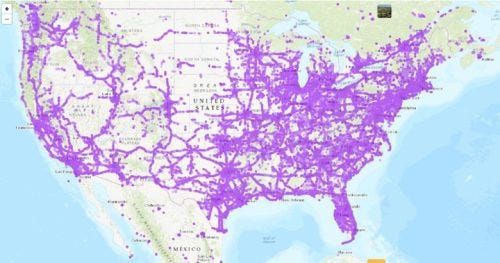
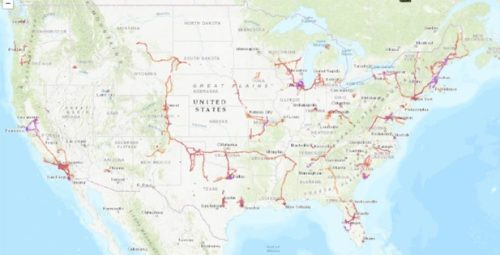
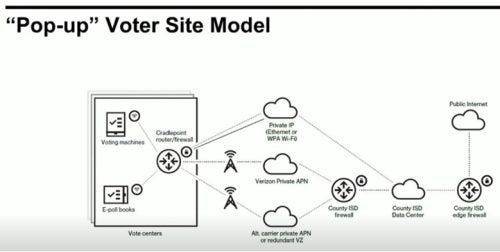
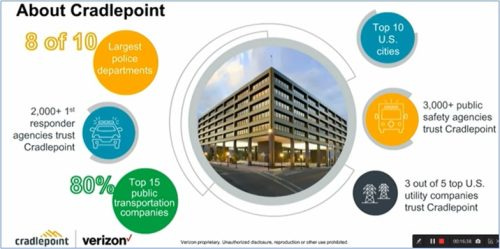
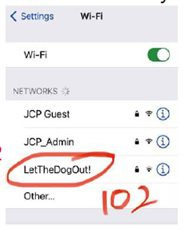
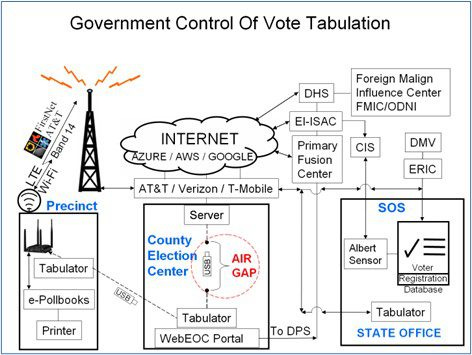
No, I haven't seen the Lindell Event. Will definitely check it out.
I shouldn't be surprised, but I am.
Did you see the "Lindell event"? and if so, what did you think? I'm cautiously optimistic. Actually, I'm probably more pessimistic than optimistic. He's just scaling up things that TPTB have blown off as "no evidence" in the past. But, you never know.